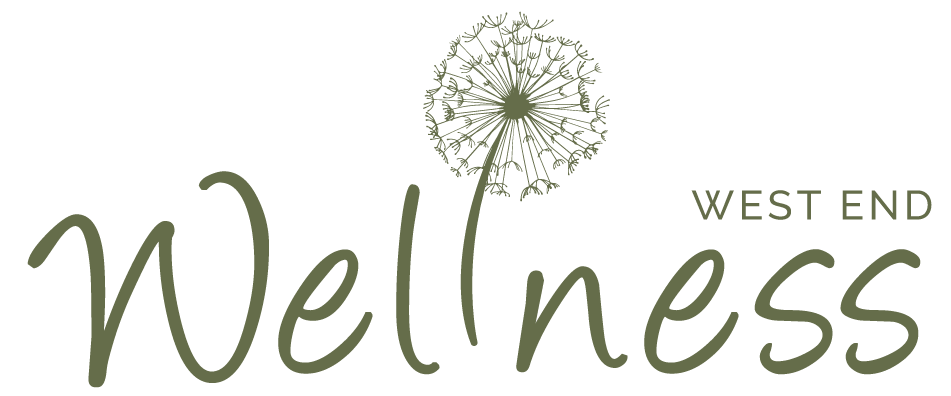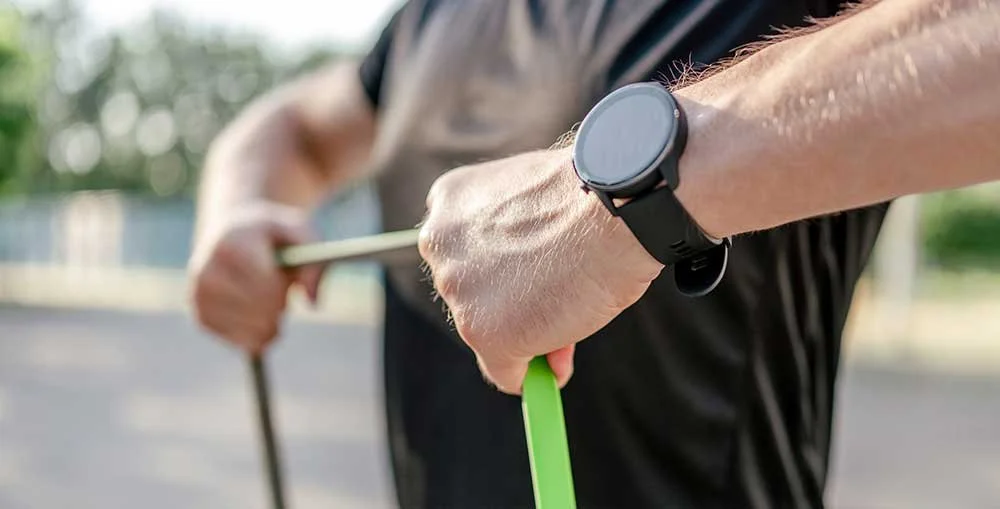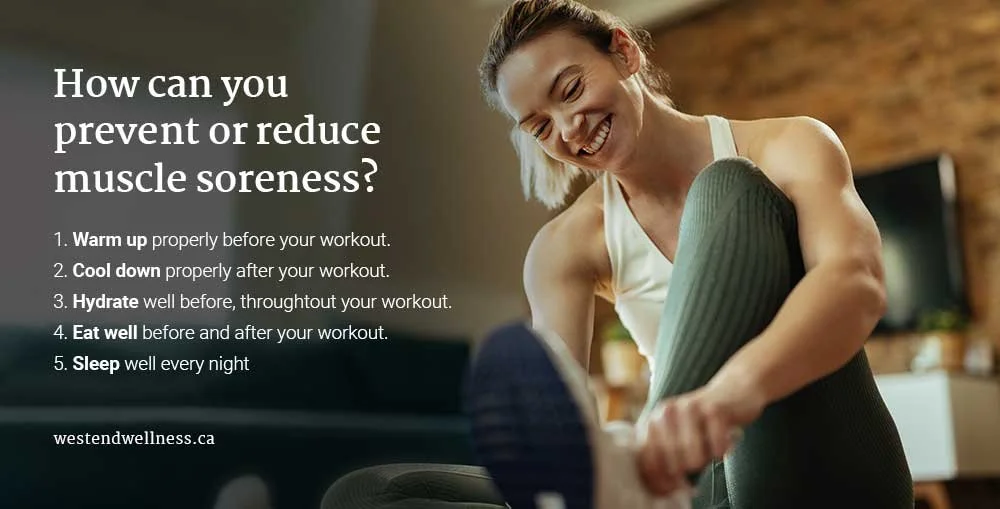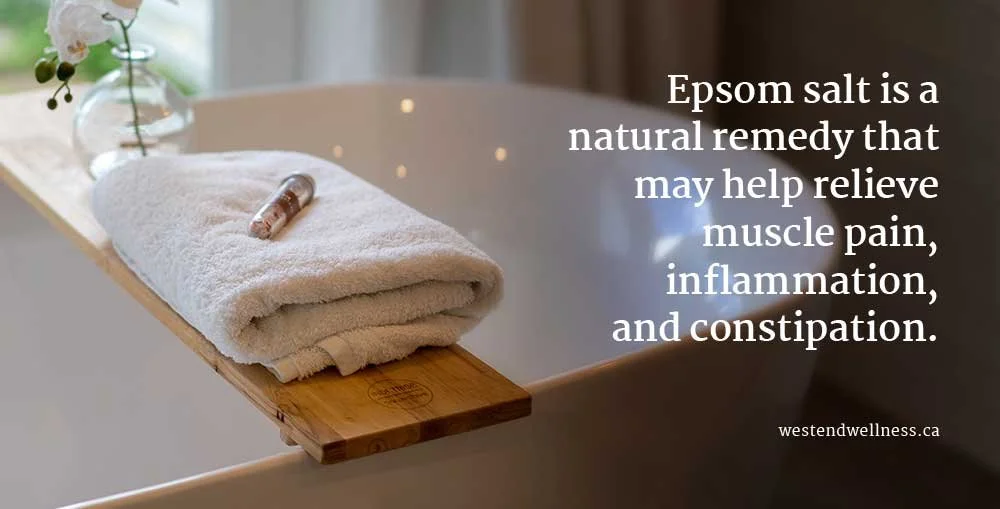Should I Still Work Out When Sore?
Table of Contents Show
Have you ever wondered: Should I still work out when sore?
If you have, you’re not alone. Many people experience muscle soreness after a challenging workout and don’t know how to deal with it. Should they push through the pain and continue their exercise routine, or should they take a break and let their muscles heal?
This article will answer this question and help you find the best balance between exercise and recovery. We’re going to explain what causes muscle soreness, how to prevent or reduce it, and how to decide whether to work out or rest when you’re sore.
By the end of this article, you’ll better understand how your muscles work and how to take care of them. You’ll also learn some natural remedies and tips that can help you ease your soreness and speed up your recovery. And most importantly, you’ll be able to enjoy your workouts without compromising your health or comfort.
So, are you ready to learn more about muscle soreness and how to deal with it? Let’s get started!
What causes muscle soreness?
Muscle soreness is a normal response to physical activity that challenges your muscles beyond their usual capacity.
When you exercise, you create microscopic tears in your muscle fibres, which trigger an inflammatory response and stimulate the repair and growth of new muscle tissue.
This process is called muscle hypertrophy, and it’s how you get stronger and fitter over time.
However, this process also causes discomfort and pain in the affected muscles, usually 24 to 48 hours after the exercise.
This is known as delayed-onset muscle soreness (DOMS), which differs from the acute pain you feel during or immediately after the exercise. DOMS can last several days and affect your range of motion, strength, and performance.
Common causes of muscle soreness
Muscle soreness is a common phenomenon that occurs after physical activity that challenges your muscles beyond their usual capacity. It’s a sign that your muscles are adapting and growing stronger over time. However, it can also affect your performance and comfort if not managed properly.
There are many possible causes of muscle soreness, but some of the most common ones are:
Muscle tension or stress: This can happen when you hold your muscles in a tight or contracted position for a long time, such as when you sit at a desk, drive a car, or use a computer. This can cause stiffness, pain, and reduced range of motion in your muscles.
Overuse or injury: This can happen when you use your muscles too much, too soon, or too often, such as when you start a new exercise program, increase the intensity or duration of your workout, or do repetitive movements. This can cause microscopic tears in your muscle fibres, which trigger inflammation and pain in your muscles.
Delayed onset muscle soreness (DOMS): This is the type of soreness that you feel 24 to 48 hours after a challenging workout, especially if you did something new or different. This is caused by the breakdown and repair of muscle tissue, which leads to increased sensitivity and stiffness in your muscles.
Other conditions that can also cause muscle soreness include infections (such as the flu), autoimmune disorders (such as lupus), medications (such as statins), thyroid problems (such as hypothyroidism), and electrolyte imbalances (such as low potassium).
Muscle soreness is not always bad, as it indicates that your muscles are working hard and getting stronger. However, suppose you experience severe, persistent, or recurrent muscle pain that interferes with your daily activities or quality of life. In that case, you should consult a doctor or a physical therapist to rule out any serious underlying causes.
Should you work out when you’re sore?
The answer to this question depends on how sore you are, what kind of exercise you did, and what kind of exercise you plan to do next. Here are some general guidelines to help you decide:
If you have mild to moderate soreness, you can still work out, but you should avoid doing the same type of exercise that caused the soreness in the first place.
For example, if you did a heavy leg day on Monday and feel sore on Tuesday, you can do upper body or cardio exercises instead of another leg day. This will allow your sore muscles to rest and recover while you work on other muscle groups or aspects of your fitness.
If you have severe soreness or pain that limits your movement or function, you should take a rest day or do low-intensity activities that don’t aggravate your symptoms.
For example, if you ran a marathon on Sunday and you can barely walk on Monday, you should skip the gym and do some gentle stretching or yoga instead of another run. This will prevent further muscle damage and reduce the risk of injury.
Suppose you have chronic soreness or pain lasting more than a week or recurs frequently. In that case, you should consult a doctor or a physical therapist to rule out any underlying medical conditions or injuries.
For example, if you have persistent lower back pain that doesn’t improve with rest or treatment, you might have a herniated disc or spinal stenosis that requires professional attention.
How can you prevent or reduce muscle soreness?
Muscle soreness is inevitable if you challenge yourself with new or intense exercises, but there are some things you can do to prevent or reduce its severity and duration. Here are some tips:
Warm up properly before your workout. A warm-up prepares your muscles for the upcoming activity by increasing blood flow, oxygen delivery, flexibility, and range of motion. A good warm-up should last at least 10 minutes and include dynamic stretches (such as lunges, squats, and arm circles) and light cardio (such as jogging, cycling, and skipping).
Cool down properly after your workout. A cool-down helps your muscles recover from the exercise by removing waste products (such as lactic acid), reducing inflammation, preventing stiffness, and restoring normal function. A good cool-down should last at least 10 minutes and include some static stretches (such as hamstring, quadriceps, and chest stretch) and some deep breathing.
Hydrate well before, during, and after your workout. Water is essential for maintaining proper hydration levels, affecting your muscle function, performance, and recovery. Dehydration can cause muscle cramps, fatigue, weakness, and delayed healing. You should drink at least 2 litres of water per day (more if you sweat a lot) and avoid alcohol and caffeine (which can dehydrate you).
Eat well before and after your workout. Nutrition plays a key role in providing energy for your muscles during exercise and repairing them after exercise. You should eat a balanced diet that includes carbohydrates (for fuel), protein (for growth), healthy fats (for hormones), vitamins (for immunity), minerals (for electrolytes), antioxidants (for inflammation), and fibre (for digestion). It would be best if you also ate a snack or a meal within an hour of your workout that contains both carbs and protein (such as a banana and a protein shake) to replenish your glycogen stores and stimulate muscle protein synthesis.
Sleep well every night. Sleep is vital for your overall health and well-being, but especially for your muscle recovery and growth. During sleep, your body releases growth hormones and testosterone, which are responsible for repairing and building new muscle tissue. Lack of sleep can impair your muscle function, performance, and recovery and increase your cortisol levels (which can break down muscle tissue). You should aim for at least 7 to 9 hours of quality sleep per night and avoid distractions (such as screens, noise, and light) that can disrupt your sleep cycle.
Natural remedies for muscle soreness
Try some natural remedies for muscle soreness. Some natural remedies can help ease your muscle soreness and speed up your recovery, such as:
Epsom salt baths: Epsom salt (magnesium sulphate) is a mineral that can relax your muscles, reduce inflammation, and improve blood circulation. Add 2 cups of Epsom salt to a warm bath and soak for 20 minutes to enjoy its benefits.
Massage: Massage is a technique that can manipulate your soft tissues, relieve tension, improve blood flow, reduce pain, and promote healing. You can use your hands, a foam roller, a massage ball, or a massage gun to massage your sore muscles for 10 to 15 minutes daily.
Ice and heat therapy: Ice and heat are contrasting therapies that can affect your muscles differently. Ice can numb the pain, reduce swelling, and prevent further damage. Heat can soothe the pain, increase blood flow, and relax the muscles. You can apply ice for 10 to 15 minutes every hour for the first 24 hours after the exercise, then switch to heat for 10 to 15 minutes every 2 to 3 hours for the next few days.
How can you balance exercise and recovery?
Exercise and recovery are two sides of the same coin. You need both to achieve optimal health and fitness results. However, finding the right balance between them can be tricky, as it depends on many factors, such as your age, fitness level, goals, preferences, schedule, etc.
Here are some general principles to help you balance exercise and recovery:
Listen to your body. Your body is your best guide when it comes to exercise and recovery. You should pay attention to how you feel before, during, and after your workout and adjust accordingly. If you feel energized, motivated, and strong, you can push yourself harder or longer. If you feel tired, sore, or weak, you should take it easy or rest. If you feel pain or discomfort that doesn’t go away or worsens with time, you should stop and seek medical help.
Follow a workout regimen that suits your needs and goals. A workout regimen is a plan that outlines what type of exercise you do, how often you do it, how long you do it, how hard you do it, etc. A good workout regimen should be based on your needs (such as health conditions or injuries), goals (such as weight loss or muscle gain), preferences (such as activities or equipment), schedule (such as time or availability), etc. A good workout regimen should also include variety (to prevent boredom or plateaus), progression (to challenge yourself or improve), and recovery (to rest or heal).
Be flexible and adaptable. Exercise and recovery are not static or fixed concepts. They can change depending on various factors, such as your mood, energy level, weather, environment, etc. It would be best if you were flexible and adaptable when it comes to exercise and recovery. You should be willing to try new things (such as exercises or methods), modify existing things (such as intensity or duration), or skip things (such as workouts or rest days) if necessary.
Conclusion
Muscle soreness is a common phenomenon that occurs after physical activity that challenges your muscles beyond their usual capacity. It’s a sign that your muscles are adapting and growing stronger over time. However, it can also affect your performance and comfort if not appropriately managed.
The answer to whether you should work out when you’re sore depends on several factors, such as the type of exercise you did before the soreness occurred, the type of exercise you plan to do next; the level of soreness; etc.
In general:
If you have mild to moderate soreness, You can still work out but avoid doing the same type of exercise that caused the soreness.
If you have severe soreness, you should take a rest day or do some low-intensity activities that don’t aggravate the soreness.
If you have chronic soreness, consult a doctor or physical therapist.
You can also prevent or reduce muscle soreness by following some tips, such as warming up properly before exercising, cooling down properly after exercising and hydrating well.
If you have any further doubts or questions regarding this subject or another treatment, contact one of our experienced Acupuncturists or Registered Massage Therapists here at West End Wellness Clinic. You can either give us a call or make an appointment.
Disclaimer: Please remember this article is for informational purposes only and should not replace professional medical advice. Please consult a healthcare provider or someone with the correct qualifications before starting any new exercise or treatment program.






